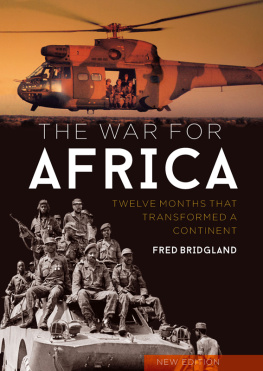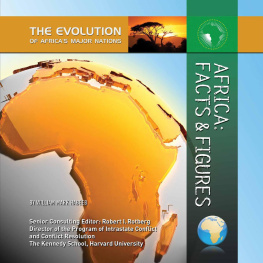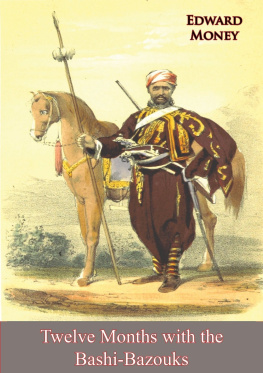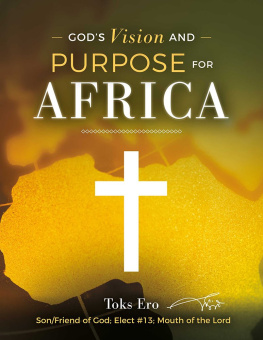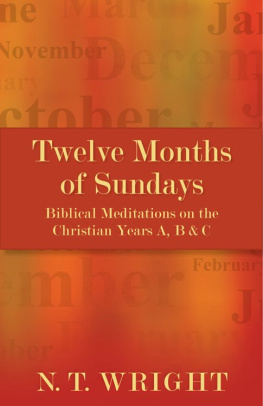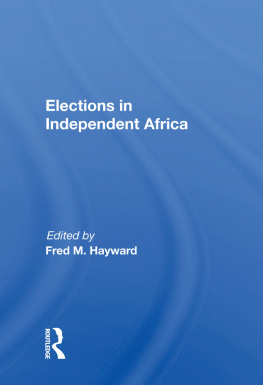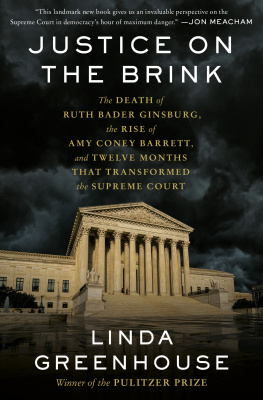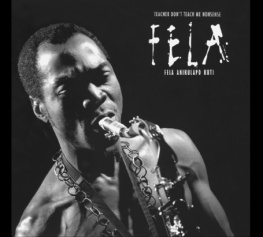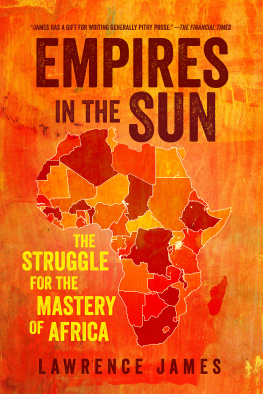Fred Bridgland - The War for Africa: Twelve Months that Transformed a Continent
Here you can read online Fred Bridgland - The War for Africa: Twelve Months that Transformed a Continent full text of the book (entire story) in english for free. Download pdf and epub, get meaning, cover and reviews about this ebook. year: 2017, publisher: Casemate, genre: History. Description of the work, (preface) as well as reviews are available. Best literature library LitArk.com created for fans of good reading and offers a wide selection of genres:
Romance novel
Science fiction
Adventure
Detective
Science
History
Home and family
Prose
Art
Politics
Computer
Non-fiction
Religion
Business
Children
Humor
Choose a favorite category and find really read worthwhile books. Enjoy immersion in the world of imagination, feel the emotions of the characters or learn something new for yourself, make an fascinating discovery.
- Book:The War for Africa: Twelve Months that Transformed a Continent
- Author:
- Publisher:Casemate
- Genre:
- Year:2017
- Rating:3 / 5
- Favourites:Add to favourites
- Your mark:
- 60
- 1
- 2
- 3
- 4
- 5
The War for Africa: Twelve Months that Transformed a Continent: summary, description and annotation
We offer to read an annotation, description, summary or preface (depends on what the author of the book "The War for Africa: Twelve Months that Transformed a Continent" wrote himself). If you haven't found the necessary information about the book — write in the comments, we will try to find it.
Fred Bridgland: author's other books
Who wrote The War for Africa: Twelve Months that Transformed a Continent? Find out the surname, the name of the author of the book and a list of all author's works by series.
The War for Africa: Twelve Months that Transformed a Continent — read online for free the complete book (whole text) full work
Below is the text of the book, divided by pages. System saving the place of the last page read, allows you to conveniently read the book "The War for Africa: Twelve Months that Transformed a Continent" online for free, without having to search again every time where you left off. Put a bookmark, and you can go to the page where you finished reading at any time.
Font size:
Interval:
Bookmark:


Published in the United States of America and Great Britain in 2017 by
CASEMATE PUBLISHERS
1950 Lawrence Road, Havertown, PA 19083, USA
and
The Old Music Hall, 106108 Cowley Road, Oxford OX4 1JE, UK
Copyright 2017 Fred Bridgland
Hardcover Edition: ISBN 978-1-61200-492-1
Digital Edition: ISBN 978-1-61200-493-8
A CIP record for this book is available from the British Library
This is a revised and updated edition of The War for Africa (Ashanti Publishing, Gibraltar, 1990).
All rights reserved. No part of this book may be reproduced or transmitted in any form or by any means, electronic or mechanical including photocopying, recording or by any information storage and retrieval system, without permission from the publisher in writing.
Typeset in India by Lapiz Digital Services, Chennai
For a complete list of Casemate titles, please contact:
CASEMATE PUBLISHERS (US)
Telephone (610) 853-9131
Fax (610) 853-9146
Email:
www.casematepublishers.com
CASEMATE PUBLISHERS (UK)
Telephone (01865) 241249
Fax (01865) 794449
Email:
www.casematepublishers.co.uk
For dear friends in Angola and South Africa
who deserve liberty, peace and prosperity
The final twelve months of the CubanSouth African conflict has been christened here the War for Africa because its consequences reverberated far beyond Angolas frontiers. The war was one of the most important turning points in the history and development of the continent. It spelled the end of the last great neo-colonial attempts at African conquest, by Cuba and the former Soviet Union. It made possible the dismantling of apartheid in South Africa and a beginning of the end of one-party dictatorship in black Africa.
The War for Africa was written in the beginning under serious constraints. It is essential that I flag these up for this new edition, which features a new prologue and epilogue. Context in history is all-important, and new facts and insights constantly surface.
As I researched and wrote the initial account, published here unchanged from the original from page 55 onwards, I was also beginning to uncover a terrible truth about one of the important war leaders that, for reasons of life and death, I could not then reveal. Also, the young South Africans whose stories I heard and told had fought the war without knowing about historic and secret events unfolding far to the south that would transform their lives but which, at the time, were hidden from them and also from the world at large: if they had known, some of them at least might have wondered what the fight was about.
General Jannie Geldenhuys, the gentlemanly chief of the South African Defence Force, gave me unfettered access to ordinary soldiers who did the fighting at the height of the Cuban-South African war in Angola in 198788. My wish was to write a book on the conflict seen through the eyes of those fighting men: Geldenhuys gave me freedom to interview as many of them as time, energy and money allowed. He promised there would be no interference from top levels of the military or government: there was none. I and my original publisher stipulated that there would be no question of the book being subjected to official scrutiny or censorship: there was none.
I pieced together the account that follows of the War for Africa through scores of interviews with men who were in the front line. The only officer I interviewed above the rank of colonel was General Geldenhuys.
Only now can I say that Geldenhuys would surely have withheld his permission had he known the horrific facts I had begun discovering at that time about South Africas key wartime ally, Jonas Savimbi, leader of the Angolan rebel movement UNITA (the National Union for the Total Independence of Angola).
Thanks to my close friend, Tito Chingunji, at that time the foreign secretary of UNITA and number three in the liberation movements hierarchy, I had begun documenting a series of truly appalling atrocities committed by Savimbi against his own people. The full story will be told in a book, as yet only part-completed, but much has already been revealed in several newspaper accounts I have written.
Basically, Savimbi, at a certain point in UNITAs resistance war against Angolas ruling MPLA (Popular Movement for the Liberation of Angola), began executing some of his top officers and their wives and children in bizarre ceremonies at Jamba, his forest headquarters in southeast Angola.
On one occasion, as described to me by several eyewitnesses, Savimbi summoned the entire population of Jamba to a central clearing where the people saw a giant stack of wood and blindfolded men tied to nearby trees. Savimbi arrived with some of his senior officers, all wearing scarlet bandanas.
Savimbi rose to speak on a day that would be remembered as Setembro vermelho (Red September). Witches had been plaguing the movement, he said. Some would that day breathe their last and would no longer be able to retard the war effort.
An armed detachment marched towards the blindfolded men. The troops lined up, fired and the men slumped dead, still held by their ropes to the trees.
Savimbi had only just begun.
He ordered every person in the crowd, children also, to gather a twig each and cast it on the woodpile. The giant bonfire was lit. O Mais Velho (The Eldest One) called names of women and asked them to step forward: they, he said, were witches whom he had condemned to death. Children would die with their mothers because a snakes offspring is also a snake, eyewitnesses recall Savimbi saying. One of the women who died that day was Aurora Katalayo, a paediatrician and haematologist who had trained and qualified as a doctor in Switzerland. She was the widow of a popular and outspoken guerrilla commander, Mateus Katalayo, who had been executed by Savimbi three years earlier. Aurora had resolutely refused Savimbis invitations to sleep with him either before or after Mateuss death.
Aurora, according to several accounts, cursed Savimbis soul aloud, called him a criminal and warned he would never win as she was frog-marched from the crowd with her four-year-old son Michel. Mother and son were pitched into the fire. Tito Chingunji said the proof Savimbi gave of Auroras witchcraft was the Swissification of Michel and his 12-year-old sister MBimbi but, said Tito, she really died because of her resistance to Savimbis sexual advances.
Subsequently, my friend Tito was detained by Savimbi with his wife Raquel and their four children. As I struggled to help Tito, contacting intelligence agencies in London and Washington who had worked closely with him and urging them to act on his behalf, I received death threats from UNITA thugs who also threatened to mutilate close members of my family. My efforts failed. Tito was executed by Savimbi with his wife, children and entire extended family of about 50 people. Suddenly I knew the full meaning of bereavement, a cosmic despondency, a wrenching, terrible deprivation of a friendship that had endured amazing adventures and difficulties and had, I hoped, many rich years to run. All the efforts and subterfuges by me and others to preserve Titos life had bitten the dust. His death must have been as lonely as that of Steve Biko. His life was snuffed out callously and evilly.
The circumstance of this story in relation to the War for Africa was that thousands of UNITA soldiers fought alongside South Africans. They were the poor bloody infantry.African armoured vehicles were swept away by enemy fire like chaff in the wind. These ordinary peasant soldiers were not guilty of Savimbis crimes, but I had no access to them as I endeavoured unsuccessfully to save Titos life. Their role in the war deserved nevertheless to be told, so I interviewed Colonel Fred Oelschig, the senior South African Defence Force liaison officer with Savimbi throughout 198689, and added his analysis as a postscript to the book. Oelschigs own account appears, again unchanged, at the end of this new edition. Oelschig did not know, when I talked to him, what I had been discovering about Savimbi, and I have no idea what he knew at the time about events at the heart of the UNITA movement.
Next pageFont size:
Interval:
Bookmark:
Similar books «The War for Africa: Twelve Months that Transformed a Continent»
Look at similar books to The War for Africa: Twelve Months that Transformed a Continent. We have selected literature similar in name and meaning in the hope of providing readers with more options to find new, interesting, not yet read works.
Discussion, reviews of the book The War for Africa: Twelve Months that Transformed a Continent and just readers' own opinions. Leave your comments, write what you think about the work, its meaning or the main characters. Specify what exactly you liked and what you didn't like, and why you think so.

